Ukraine: Through the eyes of the people
By Sean Sutton [ Mines Advisory Group ]
CISR JournalThis article is brought to you by the Center for International Stabilization and Recovery (CISR) from issue 26.1 & 2 of The Journal of Conventional Weapons Destruction available on the JMU Scholarly Commons and Issuu.com
To view the print version of this beautiful photo-essay, please view the article on the JMU Scholarly Commons or Issuu.com at the links above.
I have seen first-hand the long-lasting destruction that can be caused by explosive weapons and landmines across the world. My trip to Ukraine in April 2022 was no different. Ukraine has been ravaged by conflict for more than eight months. During my time there, I found many examples of makeshift signs warning returning civilians that strategically planted explosive weapons were somewhere inside or nearby. Written in bold, the signs serve as a warning for all types of unexploded ordnance (UXO) such as bombs, booby traps, and landmines.
Lviv
A train transporting civilians from Lviv was damaged by Russian rockets soon after leaving Zaporizhzhia. Serhi, the train manager, explained:
It was the most difficult day in my career. We left at twelve mid-day and just arrived here at 3:30 p.m. the next day—more than twenty-seven hours later. Soon after we left, as we were crossing the bridge to Khortytsia island, two missiles exploded. The blast took out many windows and did a lot of damage, but because we always have the blinds down, no one was injured. It was a miracle. Four of the carriages had to be changed at the next station.
We left in an organized convoy. There were burning tanks and bodies on the street. Unexploded bombs were lying around. There are landmines in the fields. It was terrible. We had to go through ten checkpoints. Our car broke down, so we were separated from the convoy. My husband was repeatedly strip searched. We had to go because soldiers were going house-to-house to check people. They killed anyone with links to the military. Because my husband was a soldier before, we had to flee. We are lucky to have managed to escape.
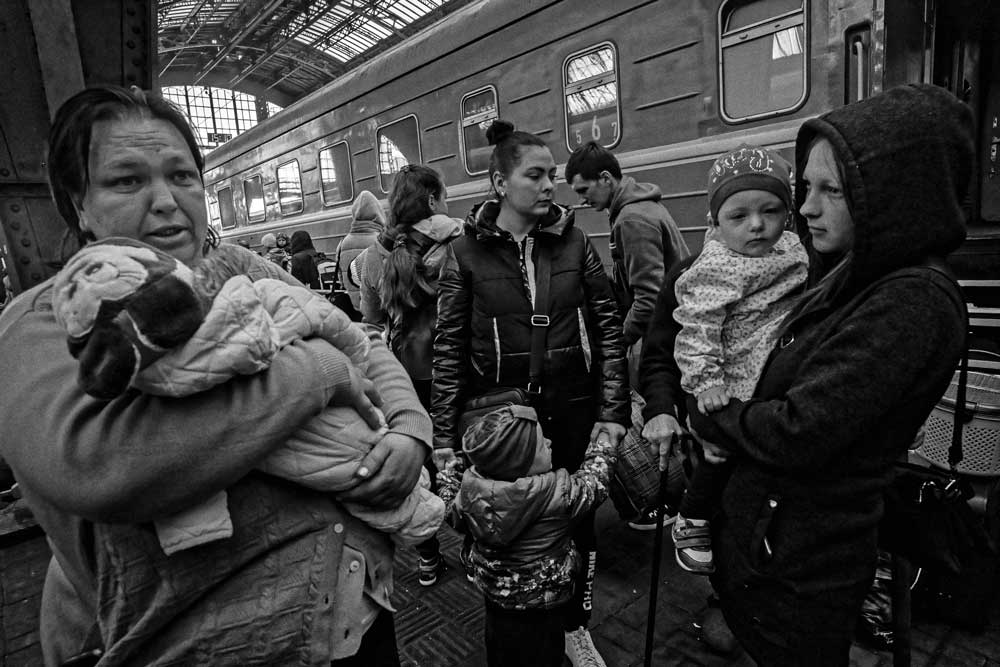
People arrived at Lviv railway station after a long night of traveling from Zaporizhzhia. Lena fled with her family from Orikhiv, which is southeast of Zaporizhzhia, close to the front line.
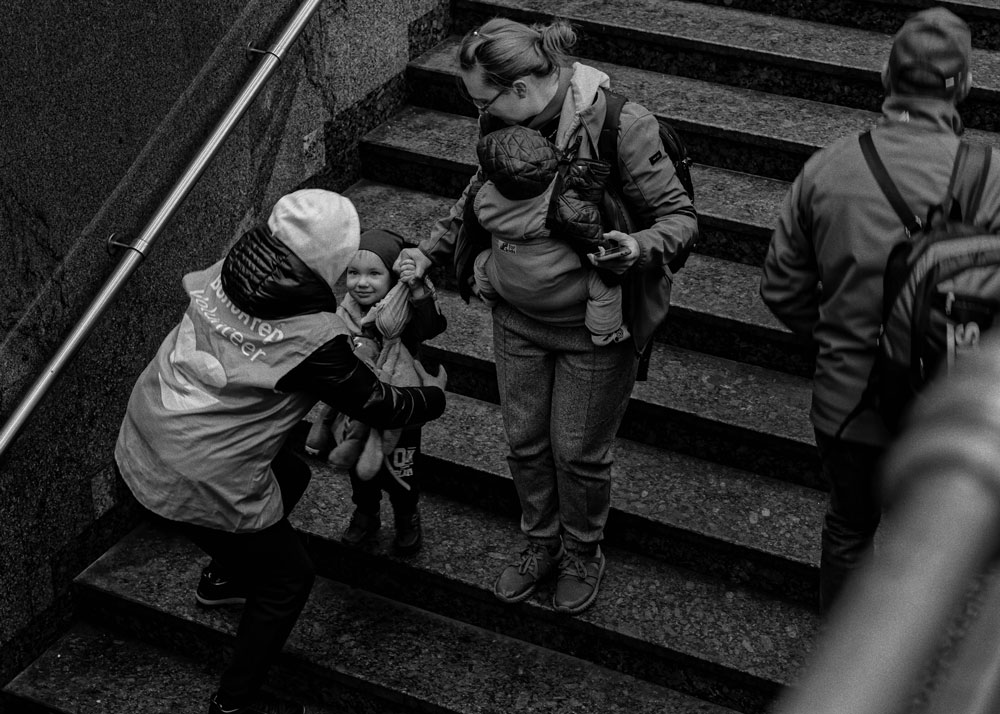
As people arrived by train to Lviv from the areas under attack, such as Mariupol, volunteers were at hand to assist.
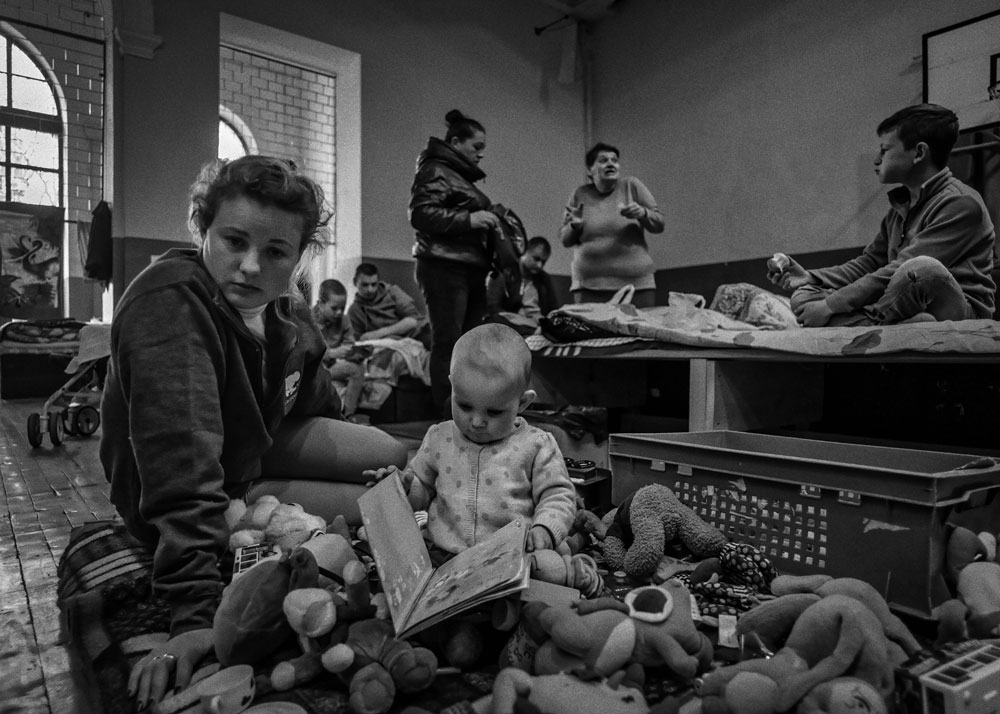
Vera fled with her husband, Evan, and their three children. They came from Molochansk, near Zaporizhzhia.
Andriivka
The village of Andriivka was occupied by Russian forces for thirty-five days. The main road linking Borodyanka to Makariv runs through it. Tanks were positioned between the houses on one side and Grad rocket launchers were stationed between the houses on the other side. Grigory, one of the villagers, described his experience:
Different groups of Russians stayed here. Some were okay, others were not. Some people managed to leave before they came here. Forty of us survived—we are all over fifty. People were killed by the Russians in the village or the shelling—we have lost fifty-three people that we know of. They came with nothing—no food and little ammunition. They didn’t know that they were coming here to fight. They thought they were just coming on an exercise. A few days before they left, they started packing everything from the village—they took everything. The soldiers took ten 6x6 Ural trucks to a field nearby and unloaded all their grad rockets. They blew them up in a big explosion and then filled them with washing machines and everything else.
Russian soldiers had a Grad multi-barrel rocket launcher positioned near Viktor’s house (image above). It was damaged by Ukrainian shelling. The Russians were trying to fix it when they were ordered to retreat from the area. They warned the villagers to keep away from the area early in the morning of 30 March 2022, and then blew the launcher up to stop it falling into Ukrainian hands.
There were five rockets still in the launcher when they blew it up,” explained Viktor, “The explosion destroyed five houses. How could they do that? There was no reason. They said that it was the Ukrainian Army’s fault for damaging it, so the villages should suffer. My mother was injured and is still in hospital with leg injuries. I spent ten years building my house and I am a pensioner with nothing. What can I do? The authorities say there will be no compensation until after the war.
The village has suffered a lot during the conflict.
There were tanks placed between the houses and they fired all the time ... they killed our animals and took our food ... they have planted landmines near here. Deminers cleared landmines from the area and told people it was safe. But after they let the cows [out] two of them died. It wasn’t safe at all. They didn’t find all of them [landmines] obviously.
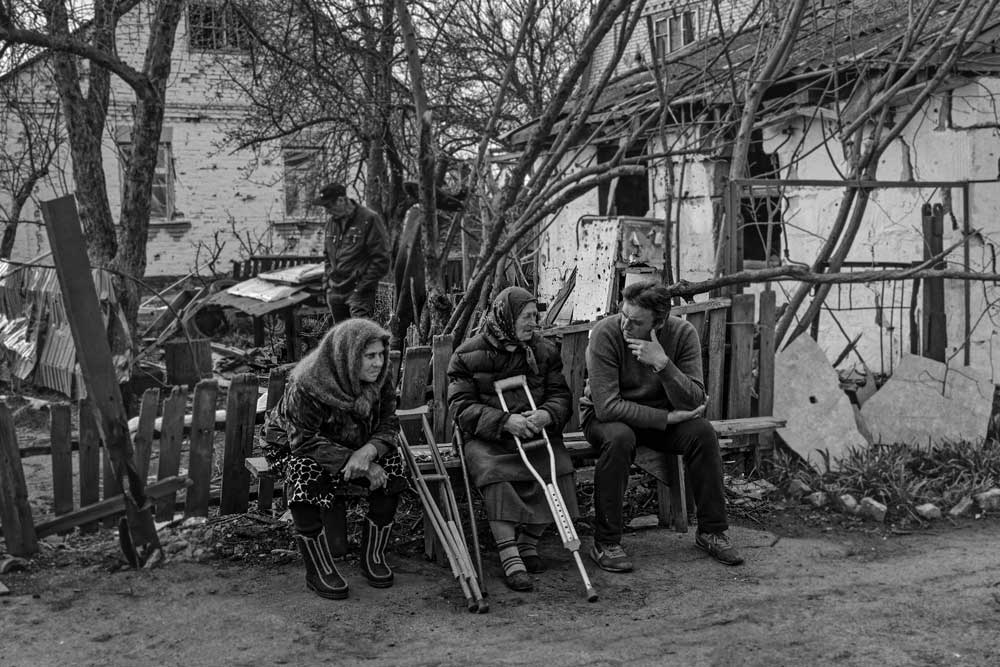
Surviving villagers from Andriivka sit amongst the remains of their homes.
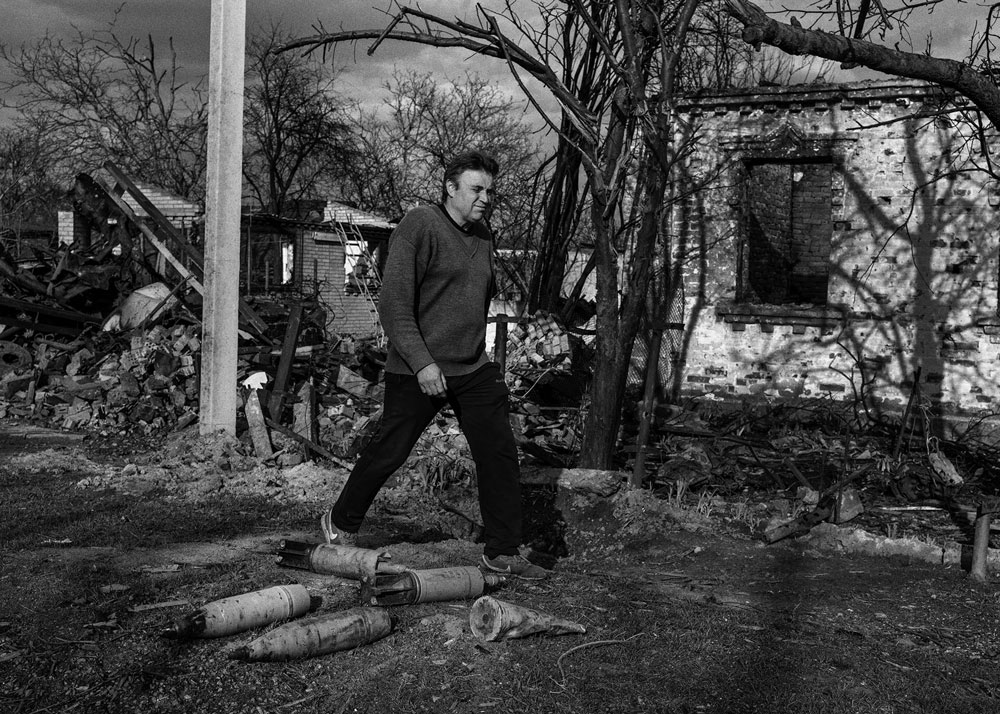
Viktor walks past unexploded projectiles in the remains of his village, Andriivka.
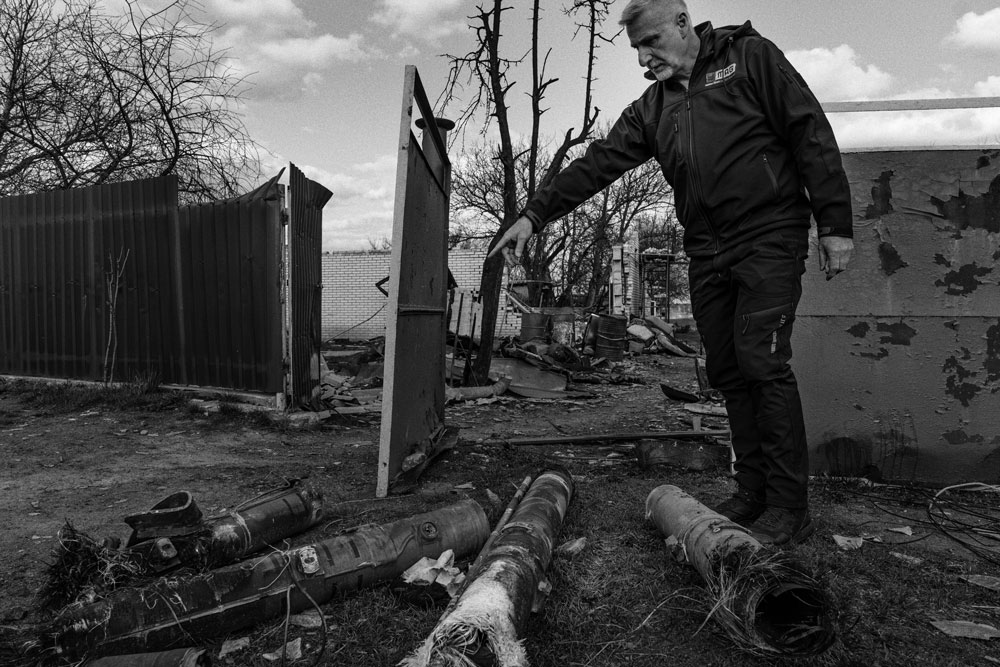
MAG technical operations manager with Kornet anti-tank missiles. They have been partially burnt but still contain their explosive warheads.
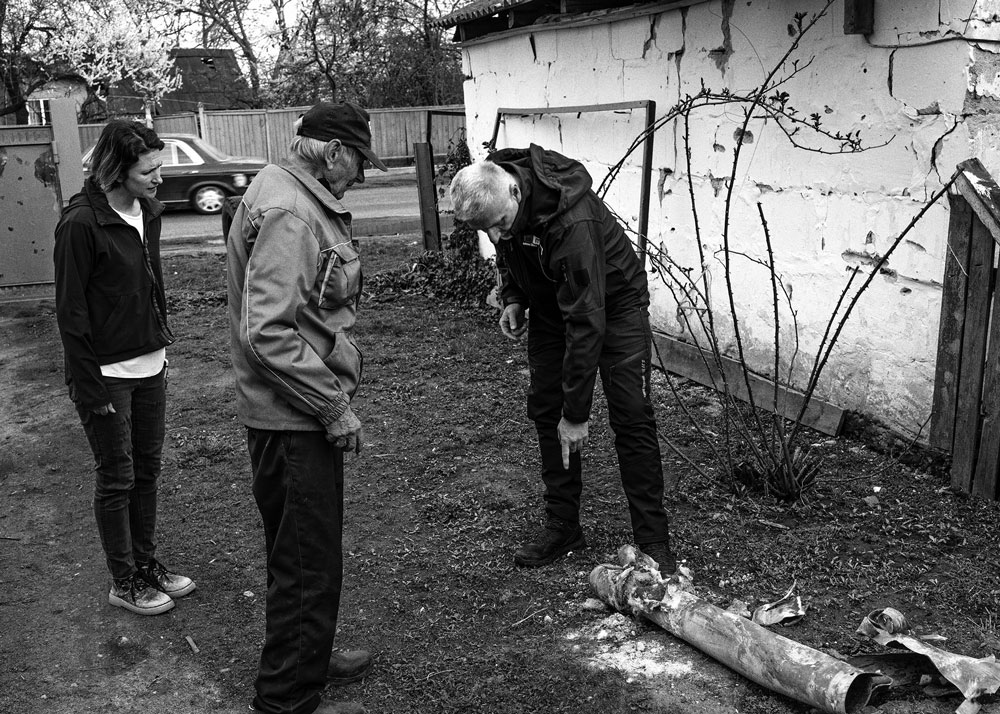
MAG technical operations manager warns villages not to touch the explosive remains of a Grad rocket.
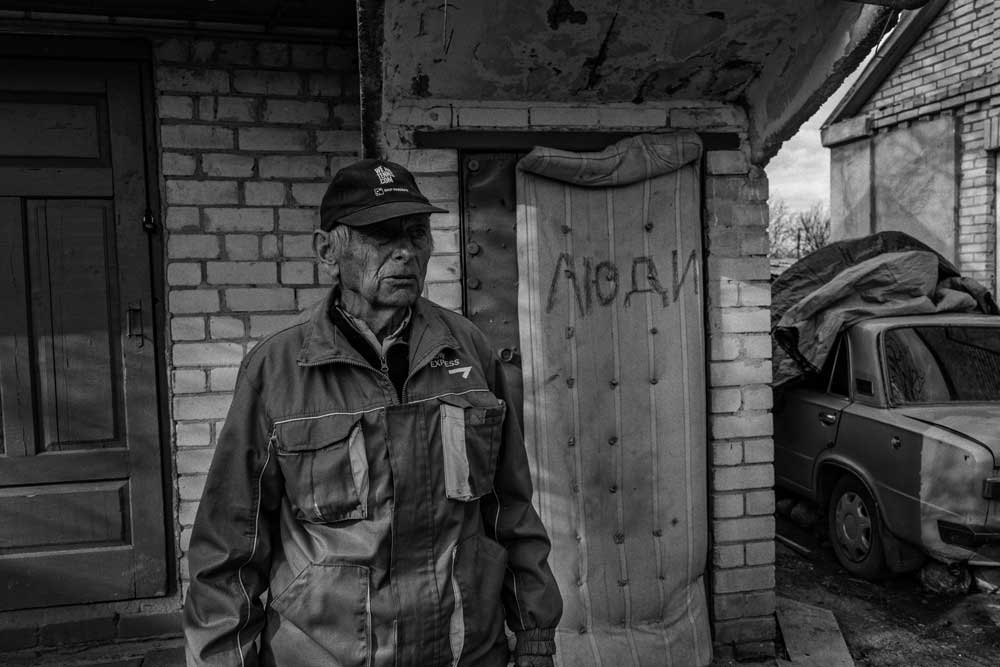
Mycola next to a mattress with the word “human” written on it and attached to the cellar door. He explained: “This is where I spent my time for thirty-five days.”
Ozera Village
Ozera village was on the front line close to Hostomel and its strategically important airfield. Taking the base was a key priority for the Russians and the airborne assault was one of the first major operations undertaken. The assault failed. Ozera changed sides several times resulting in the destruction of much of the village.
Raisa and Sergiy escaped with their son and dog from the village on 25 February 2022, and said that they were extremely lucky, twice:
We made a quick decision and put what we could into the car and fled. It was very frightening, there was fighting and bombing everywhere. We almost ran out of petrol. The car stopped just next to the first petrol station we came to.
The quick decision they made probably saved their lives. Sergiy’s sister’s family tried to escape later. Her husband was shot and died and then the car was hit by a rocket and their mother and father were killed.
Their family went back to the village to find that their house had been further demolished. The remains of a Ukrainian army truck had been there before, along with lots of explosive ordnance (EO) spread out from the explosion. The truck had been full of ammunition. The army explosive ordnance disposal (EOD) team placed all the shells in their basement and then blew them up. The explosion has left a huge hole in the ground.
Before, the house was destroyed but the foundations and basement were salvageable. Now there is nothing.
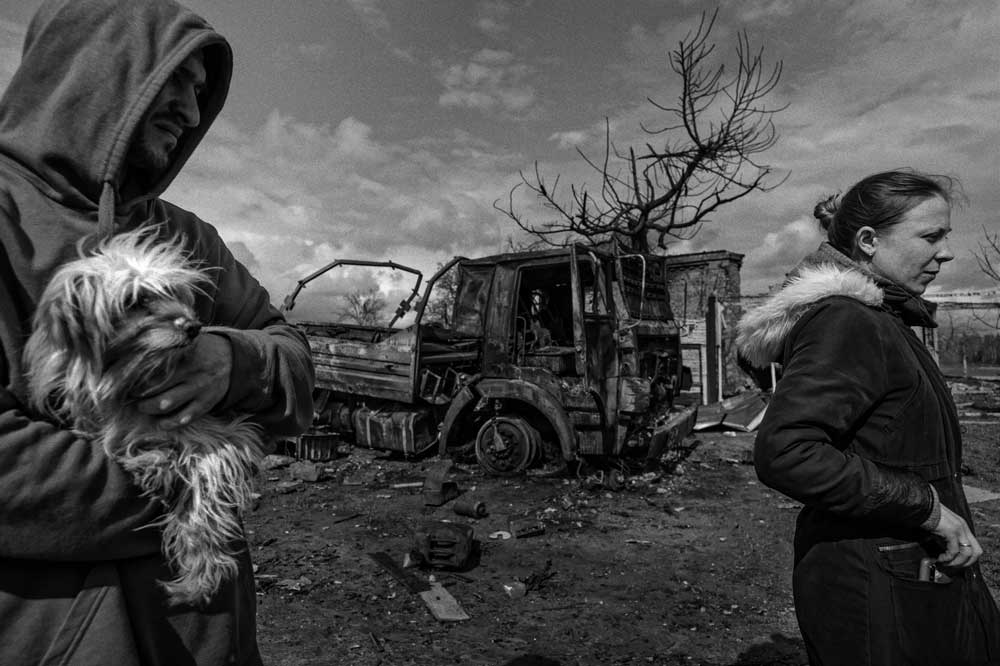
Raisa and Sergiy escaped the village with their son and dog on 25 February 2022.
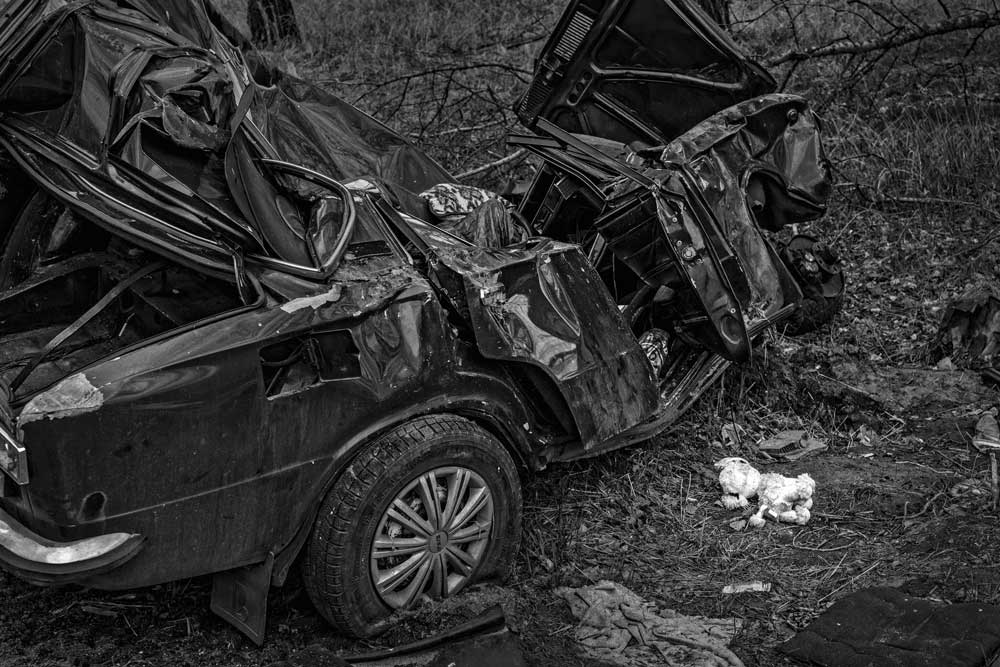
A destroyed car and a child's toy in Hostomel.
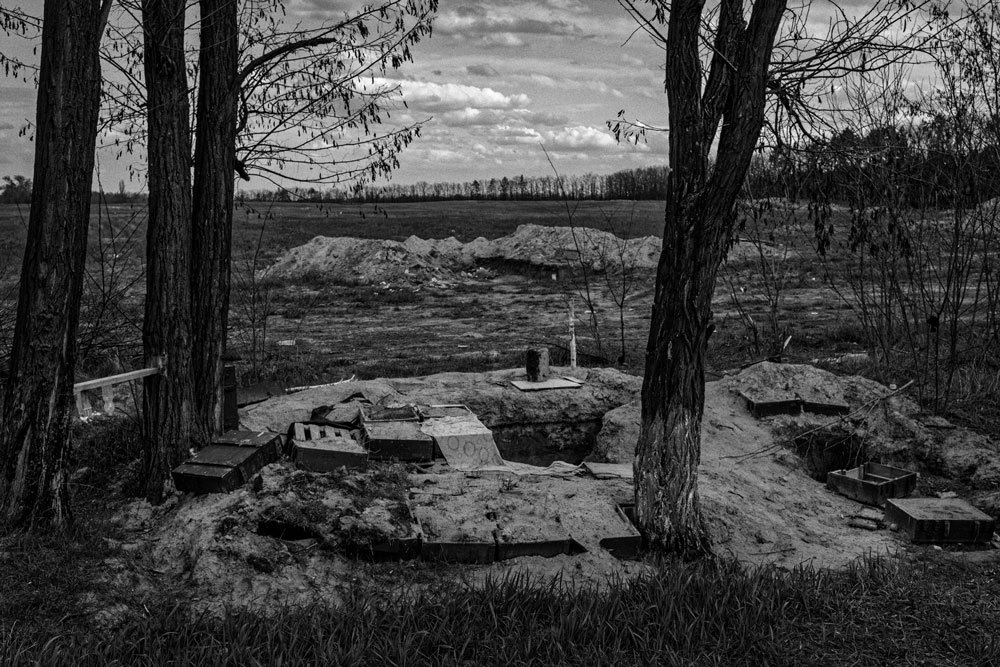
Abandoned Russian positions and minefields in Hostomel.
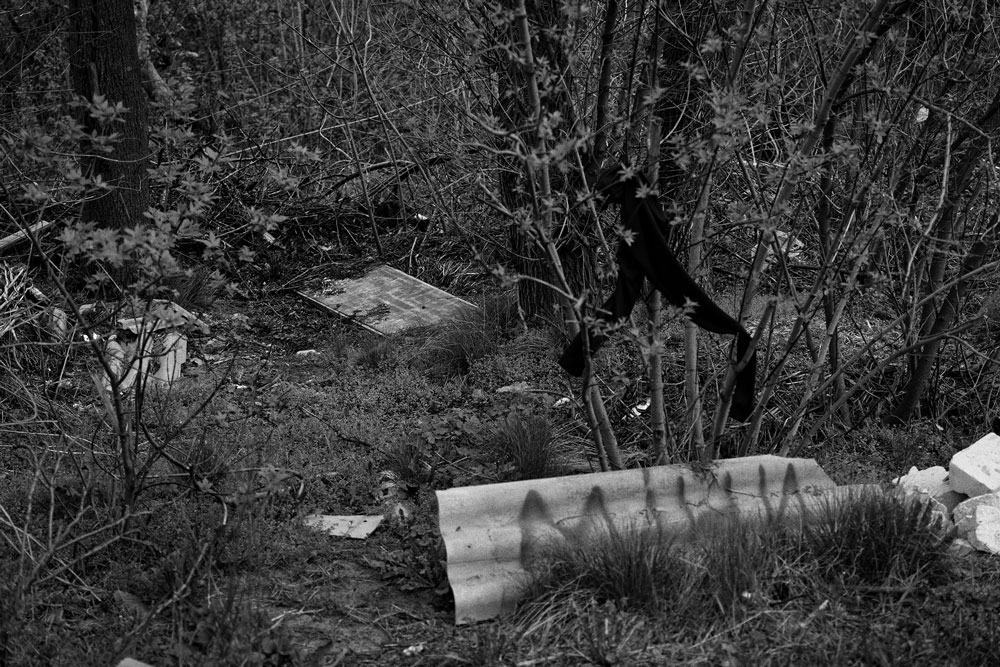
Abandoned Russian positions and minefields in Hostomel.
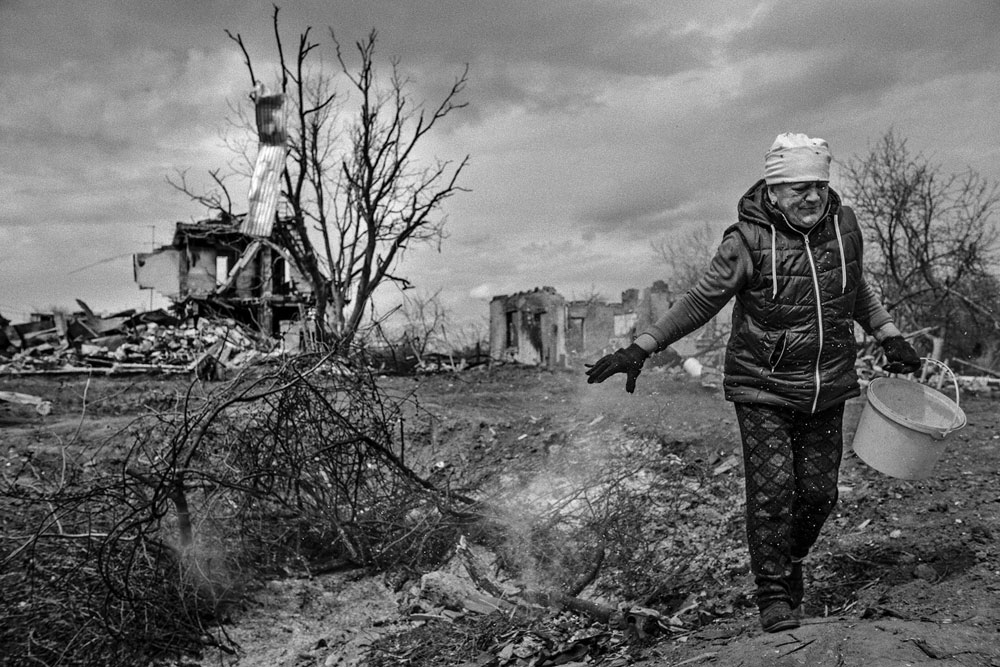
Tanya, a villager, lost her house in the explosion.
Peremoha Village
Peremoha village is situated east of Kyiv and is positioned close to a small river. The village was named Peremoha, which means victory in English, because of the military successes here in World War II. The same thing—victory—happened again explained Viktor, who remained in his village throughout the time of Russian occupation.
I watched everything. They came with great force three times to try and cross the river. But they were repelled by the Ukranian heroes three times. The last battle was on 9 March. Many tanks and BMPs [a Russian infantry fighting vehicle] were destroyed. There were Russian bodies everywhere and pieces of bloody clothing. One young soldier called Zhenya, or Khak for short, is now a hero. He destroyed four tanks, three with Javelin missiles and one with a Kornet missile. When the tanks exploded parts fell all over the village—everywhere, boom, boom, boom. I used to hide in the grass and watch.
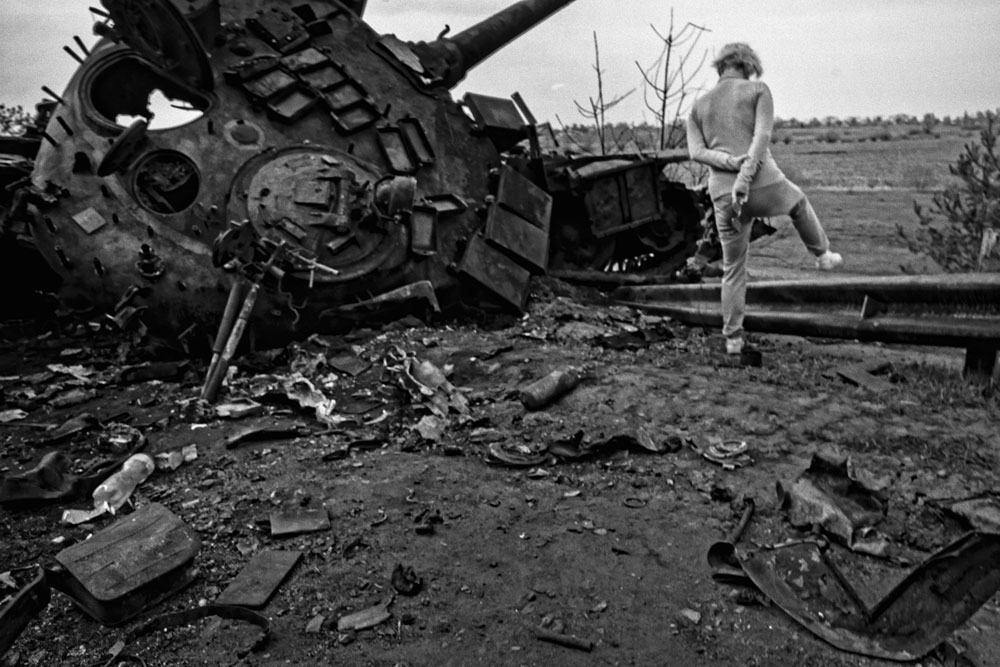
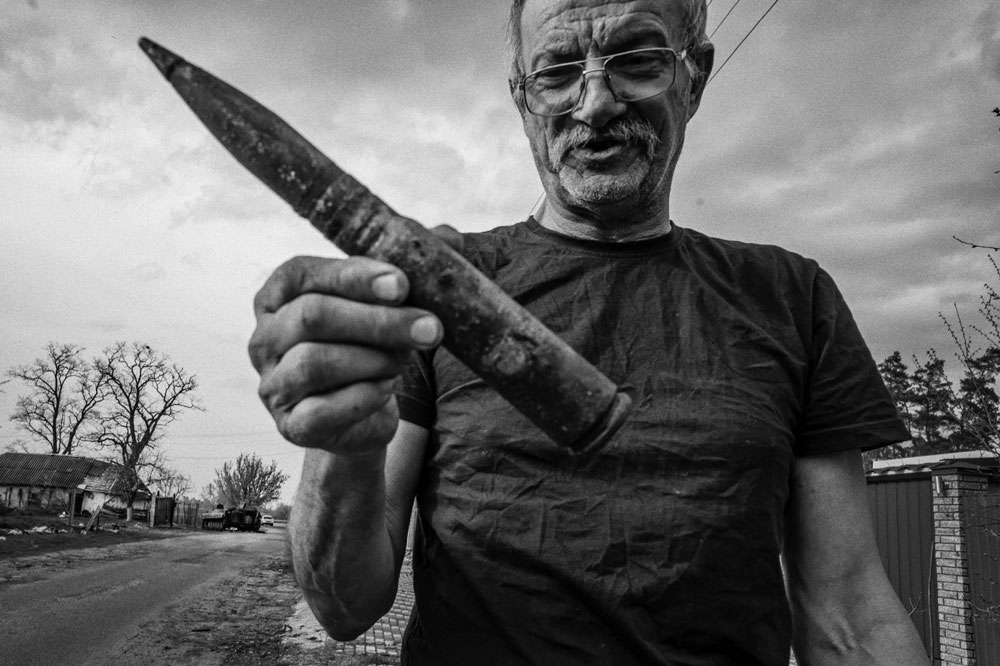
"The Russians put many mines in the village, even in the cemetery. Several deminers died here. One hit a mine in his jeep, then the next day another died. It was terrible.”
Irpin
We were worried about the cats; we didn’t know if they survived but thankfully they did. We fled when the building next to us was hit, killing many people. All our windows were blown out and we fled in terror. Bodies and flames everywhere. Our flats are damaged but okay, but in a neighbour’s flat there is something suspicious.
Through the crack of a blast-damaged door a hand grenade can clearly be seen. It has been placed on top of a large water dispenser. It could be a booby trap. Perhaps the water container has something other than water in it. Authorities were informed of the hand grenade. Booby traps have been widely reported in areas previously controlled by Russian forces.
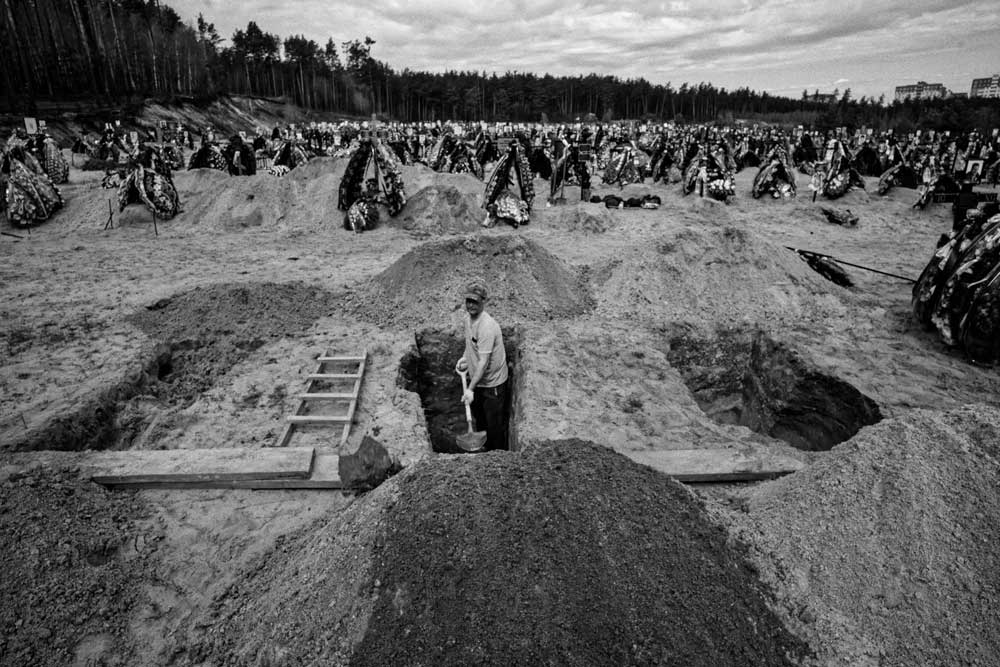
Graves being prepared in Irpin.
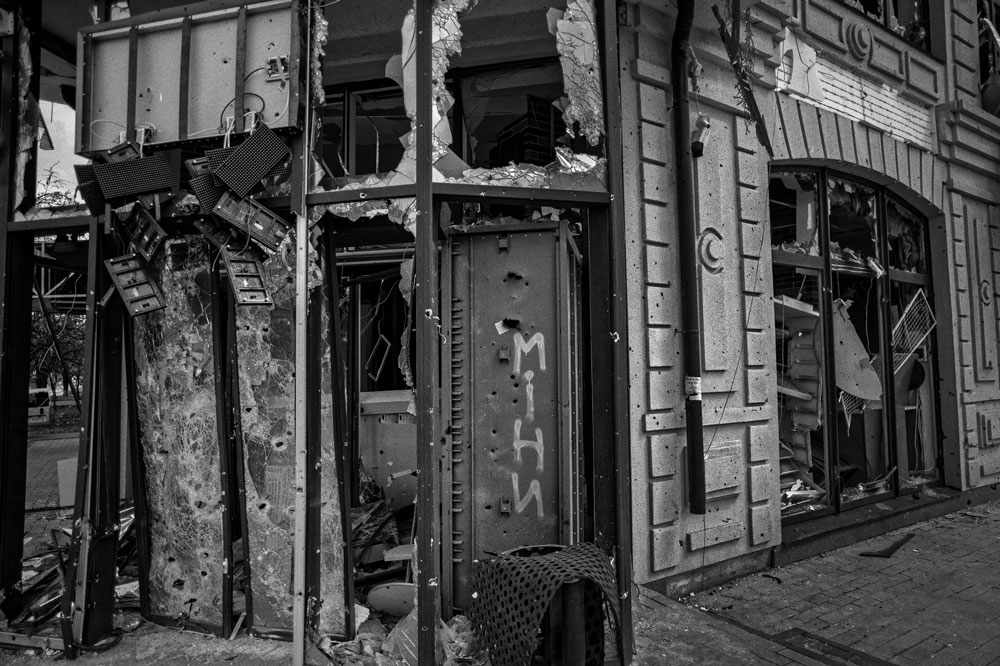
Storefront in Irpin with the word “mine” written on a damaged door.
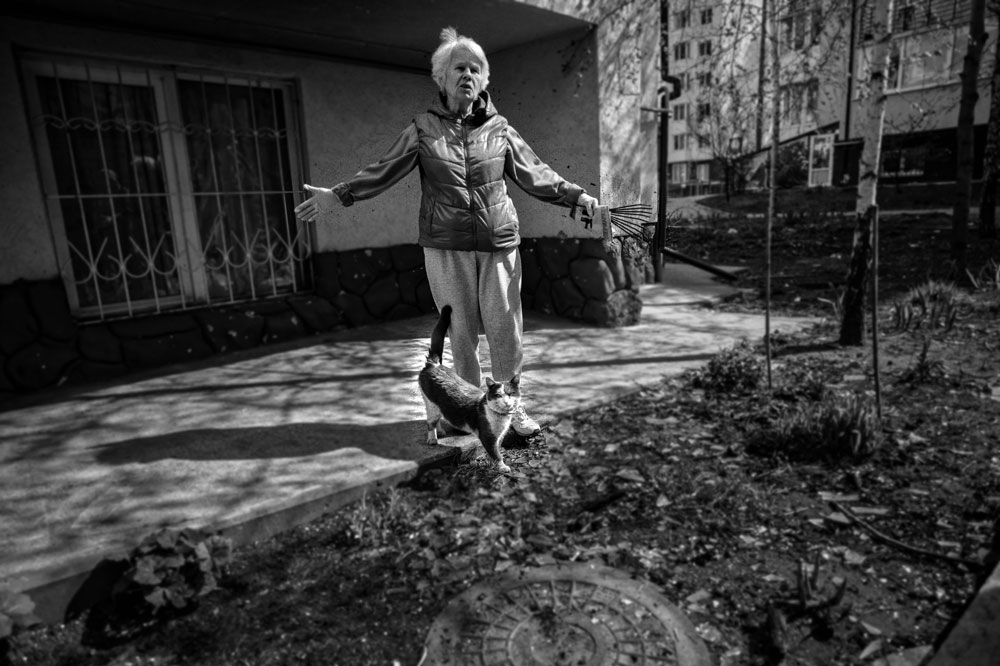
Lindila and Tatiana came back to their flats in Irpin to check on their homes and their cats.
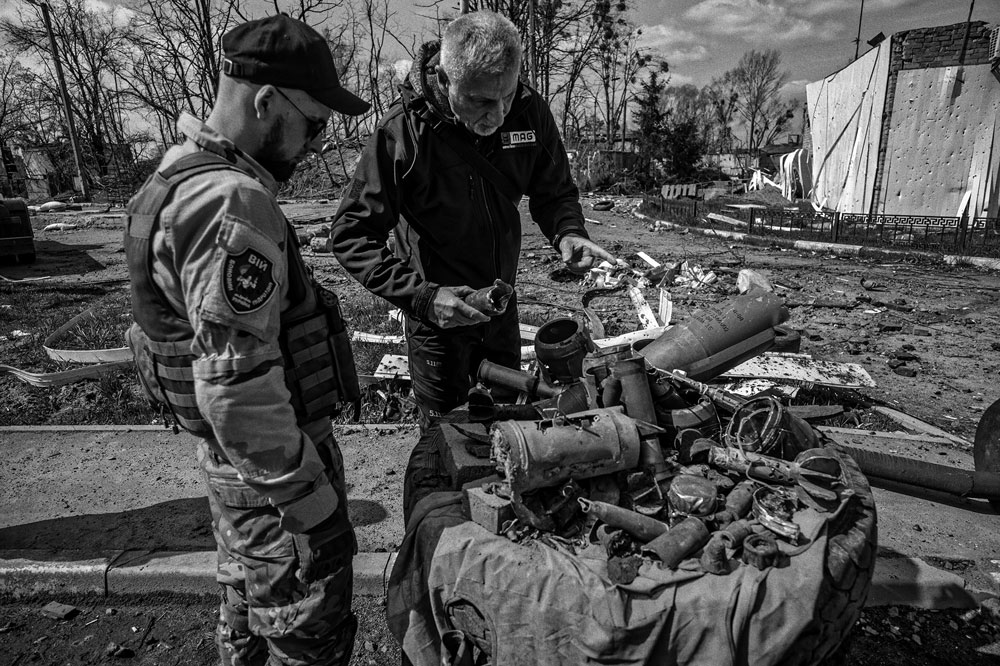
MAG technical operations manager points out dangerous items to soldiers manning a checkpoint. They said that people come with suspicous things. They report dangerous items to the army EOD teams but some items that were thought to just be scrap pieces in fact either contained explosives and or fuzes and were dangerous.
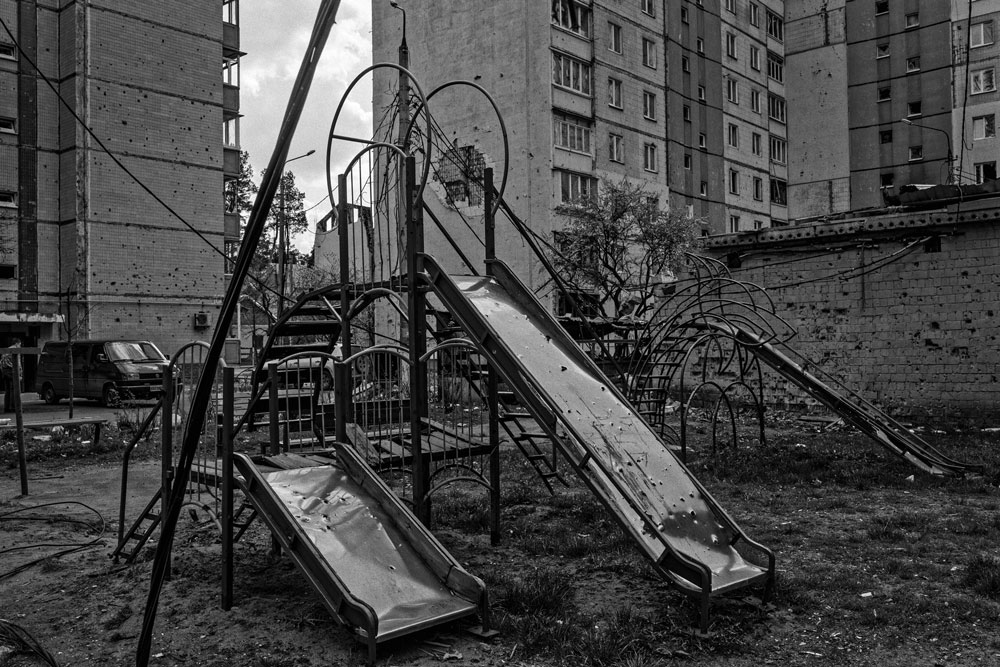
A children's playground hit with cluster munitions. The unmistakable marks including fragmentation "splatter" can be seen all around the area.

Bodoryanka and Kyiv Oblast
We have a big job on our hands. There is such a huge problem with explosives, and we are very busy. Some areas like Hostomel have a lot of landmines and we are finding a lot of boobytraps. In Bucha, bodies were booby trapped with hand grenades placed under their armpits. In two months, my team has dealt with more than twelve tons of ordnance in three villages.
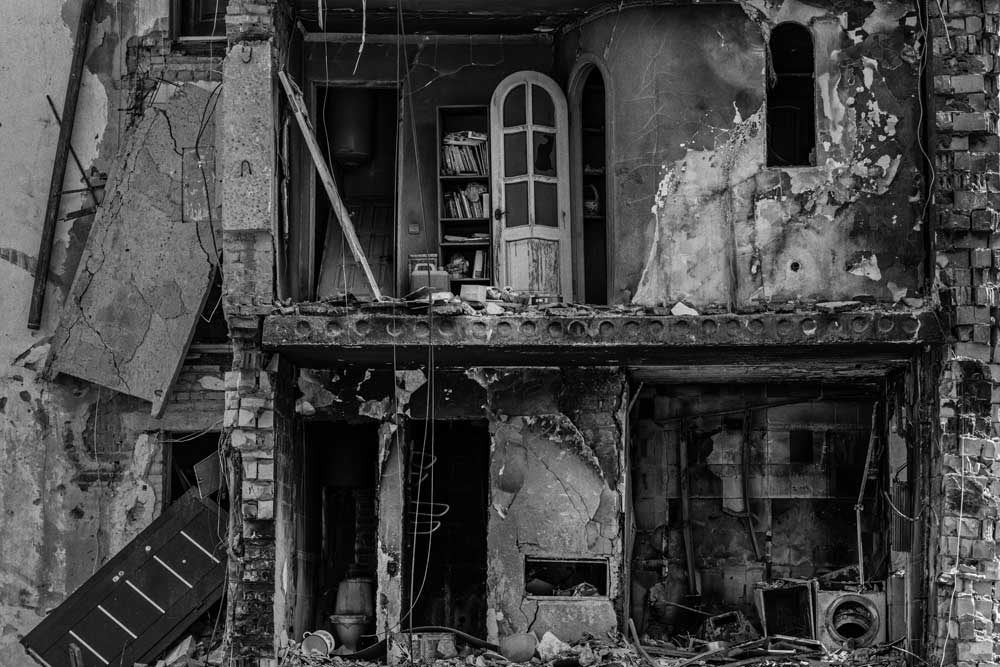
Destruction of Bodoryanka, in Kyiv Oblast. Many bodies were taken out of the rubble.
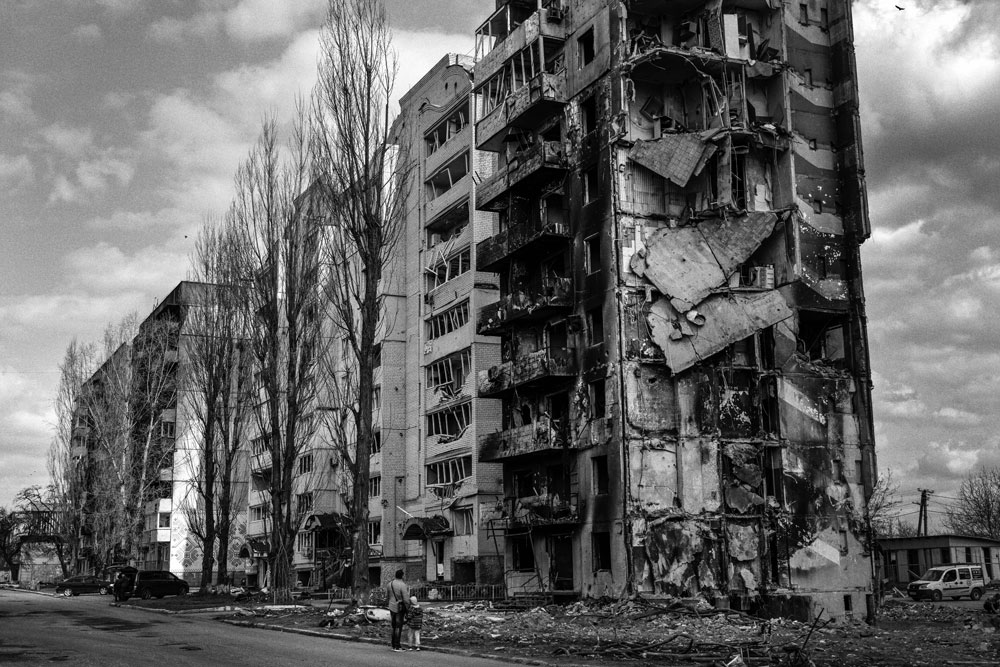
Large areas of Bodoryanka were destroyed during intense and sustained bombardments.
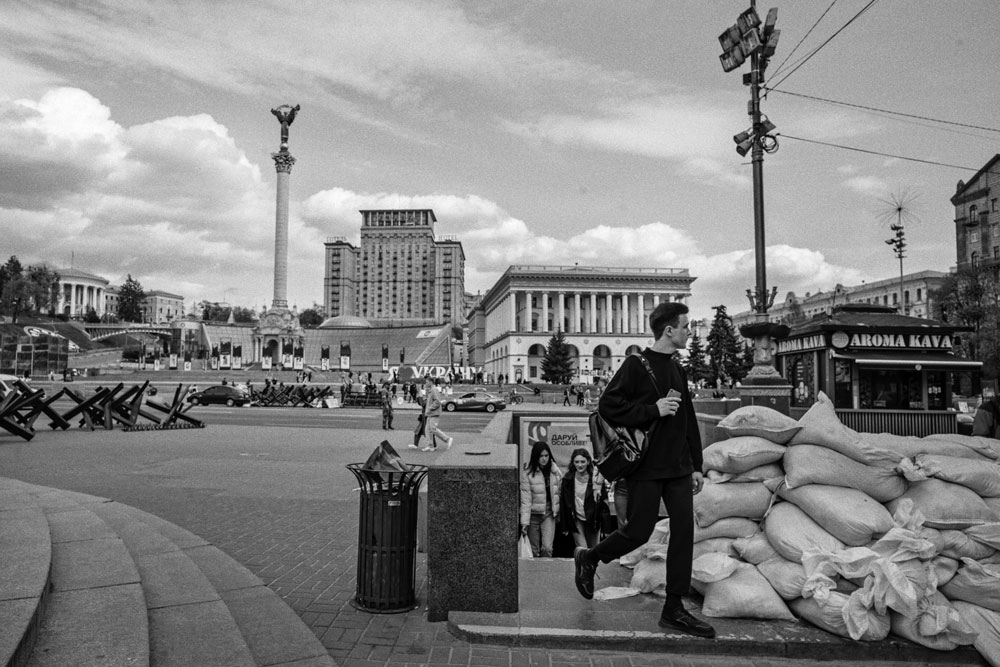
Sandbags protect entrances, and sandbagged positions, barricades, and hedgehog anti-tank obstacles are set up in many parts of Kyiv.
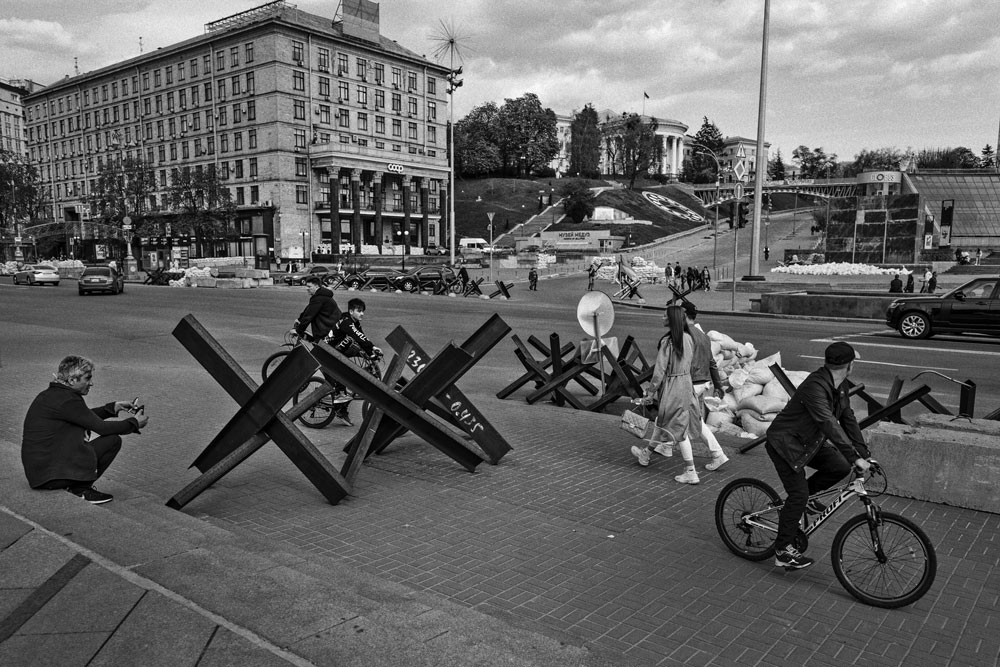
There are rings of defenses inside and outside the city.
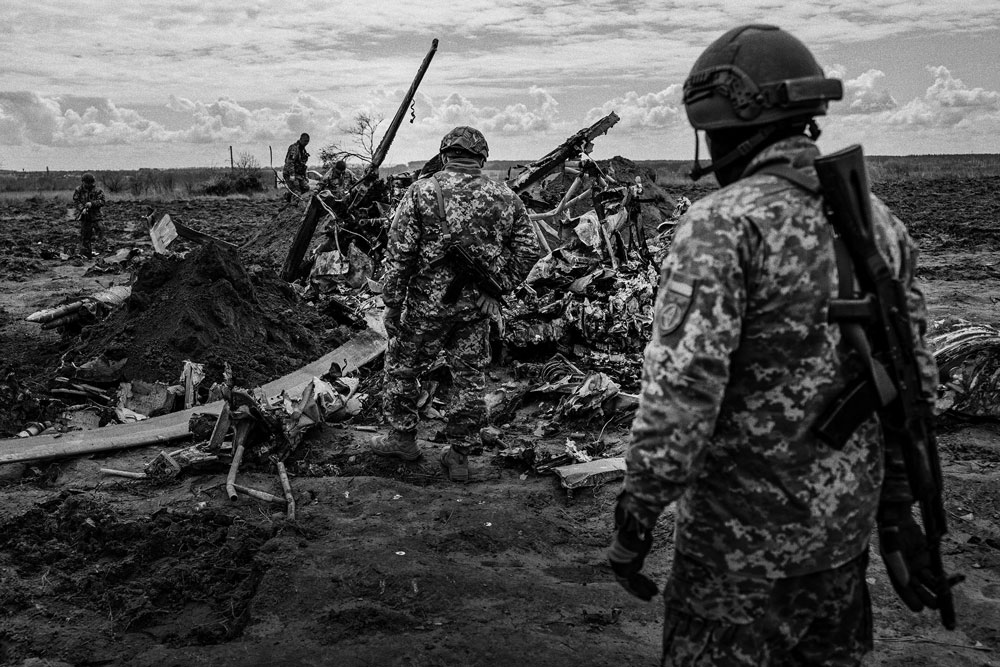
An army EOD team dealt with rockets and rocket pods from a downed Russian MI-8 helicopter. Four bodies were sprawled among the wreckage. The helicopter was shot down near Makariv by Ukrainian forces on 17 March 2022.
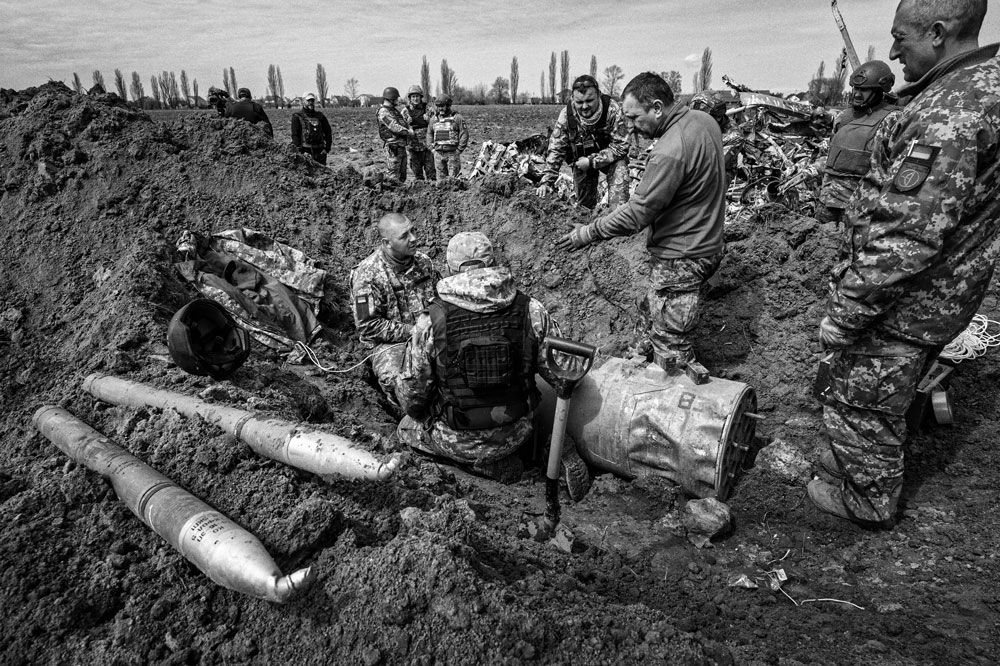
An army EOD team dealt with rockets and rocket pods from a downed Russian MI-8 helicopter. Four bodies were sprawled among the wreckage. The helicopter was shot down near Makariv by Ukrainian forces on 17 March 2022.
Next Steps
Just days after the Russian troops had been pushed out, villages were being cleared by groups of volunteers traveling amidst the devastation. It is this resilience that stood out to me. This is but a brief snapshot of what I saw and offers only a glimpse of the enormity of the work that the mine action sector will face in the years to come.
We are survivors. Five of us stayed here during everything. It was terrible. Many died. Our building was repeatedly hit. Now we survive on the little food we have. There is no electricity, no water. We cook outside and collect river water. That’s how we survive. Before were were neighbors, but now we are family.
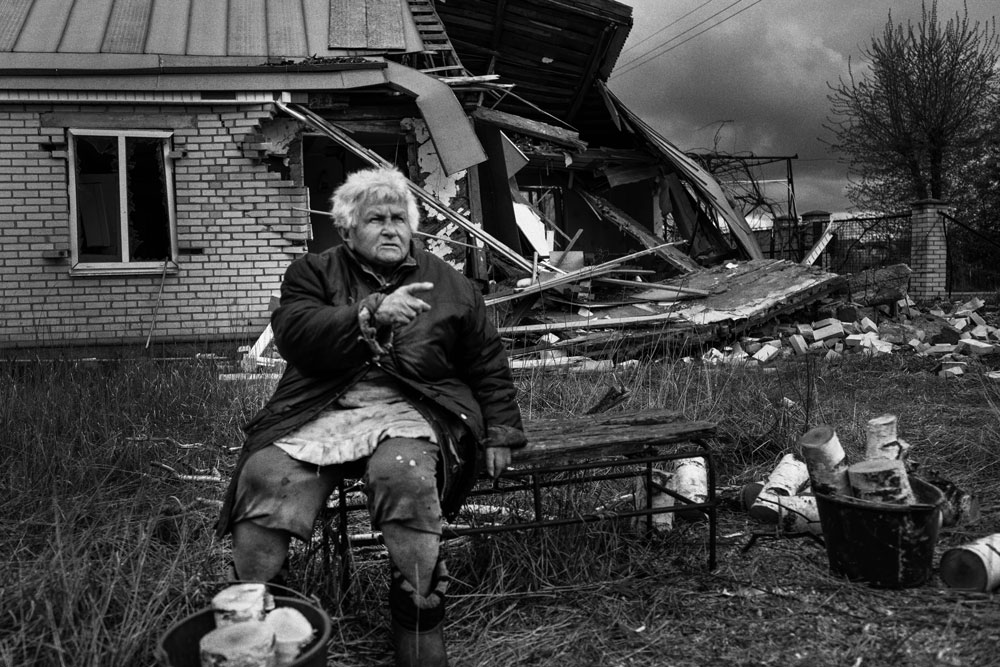
Most of the people I met in Ukraine were older people who stayed at home in their towns and villages as fighting raged around them. They were the ones who had survived the occupation and they were deeply traumatized.
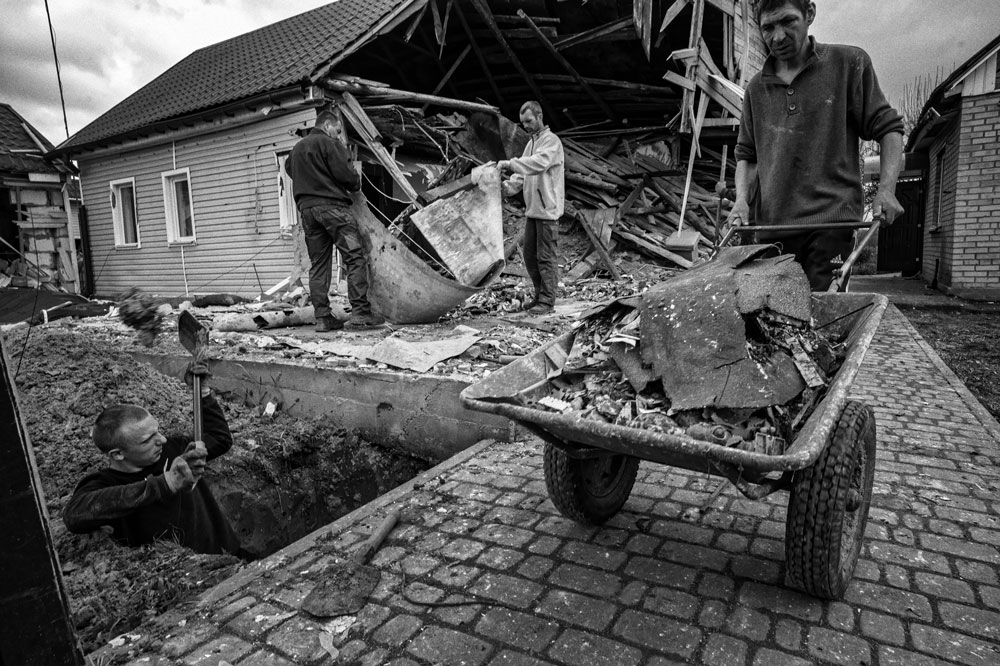
Rebuilding after the conflict.
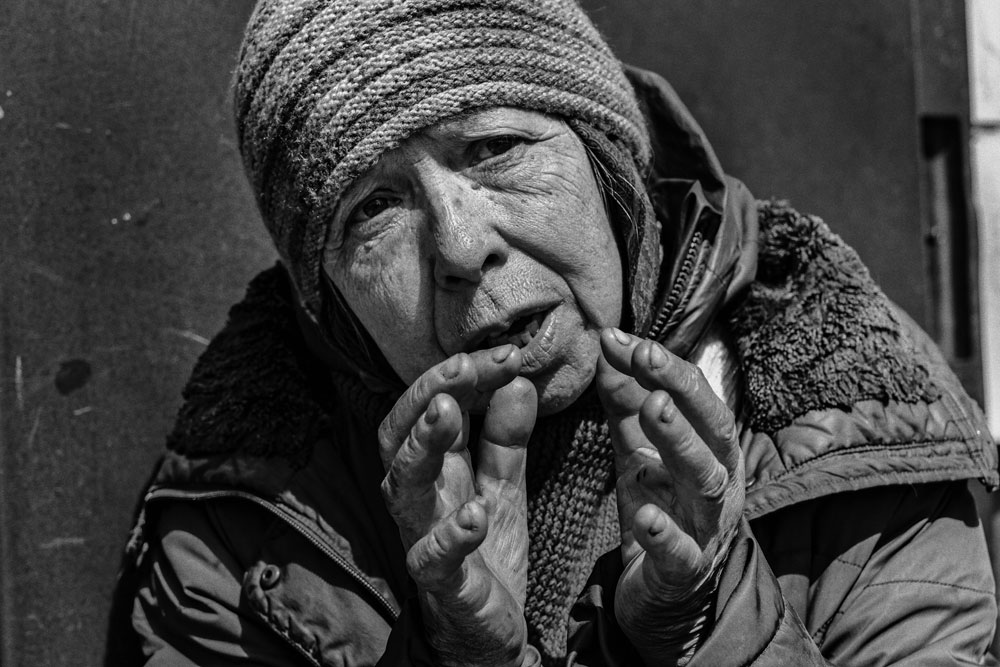
Galina outside her flat. The other side of the building is completely destroyed.
 Sean Sutton
Sean Sutton
Photojournalist and International Communications Manager
MAG (Mines Advisory Group)
Instagram: @Seansuttonphoto
https://www.maginternational.org/
Sean Sutton is an award-winning photojournalist; his well-known pictures show the impact of landmines and explosive remnants of war on communities and have been published and exhibited all over the world. His book documenting how unexploded ordnance affects people in Laos was runner-up for the Leica European Publisher’s Award. Sutton is MAG’s International Communications Manager and has worked for the organization since 1997.

